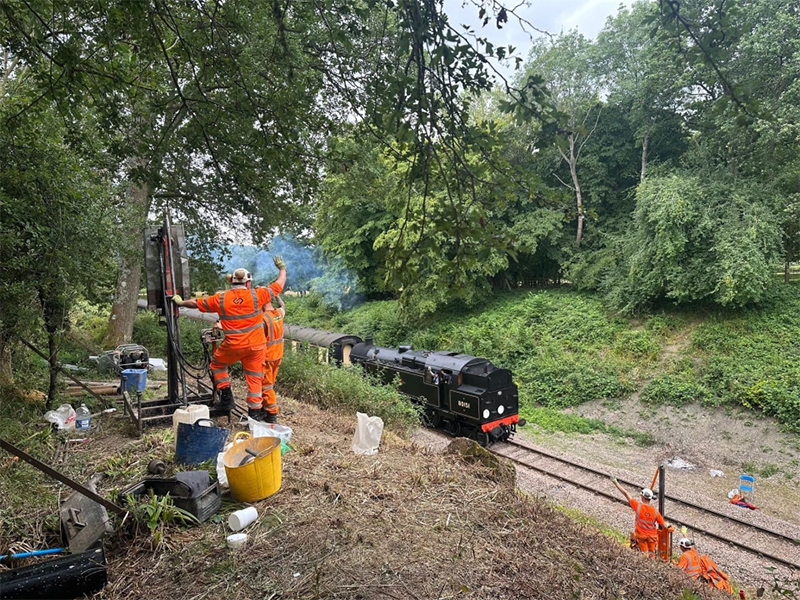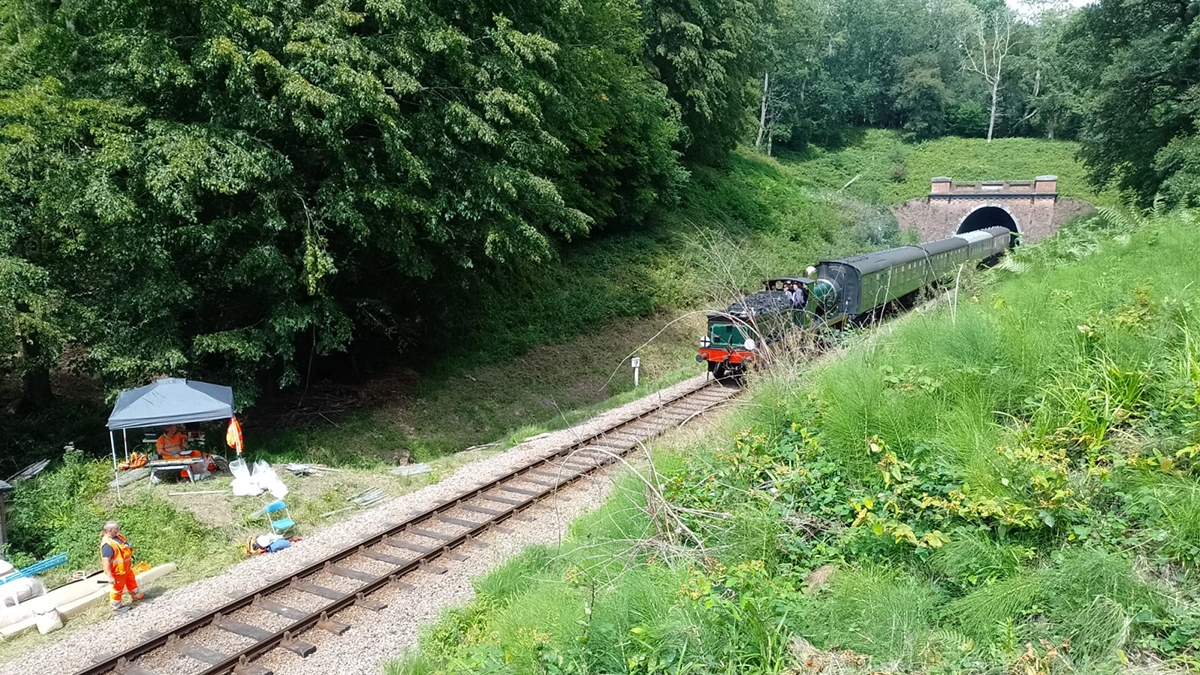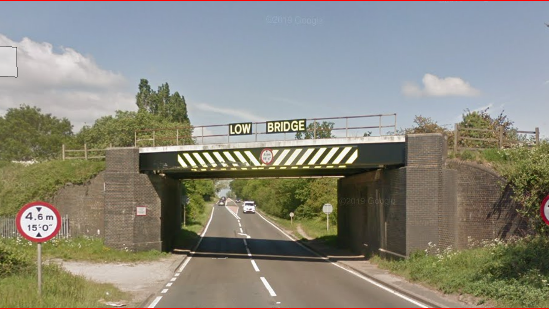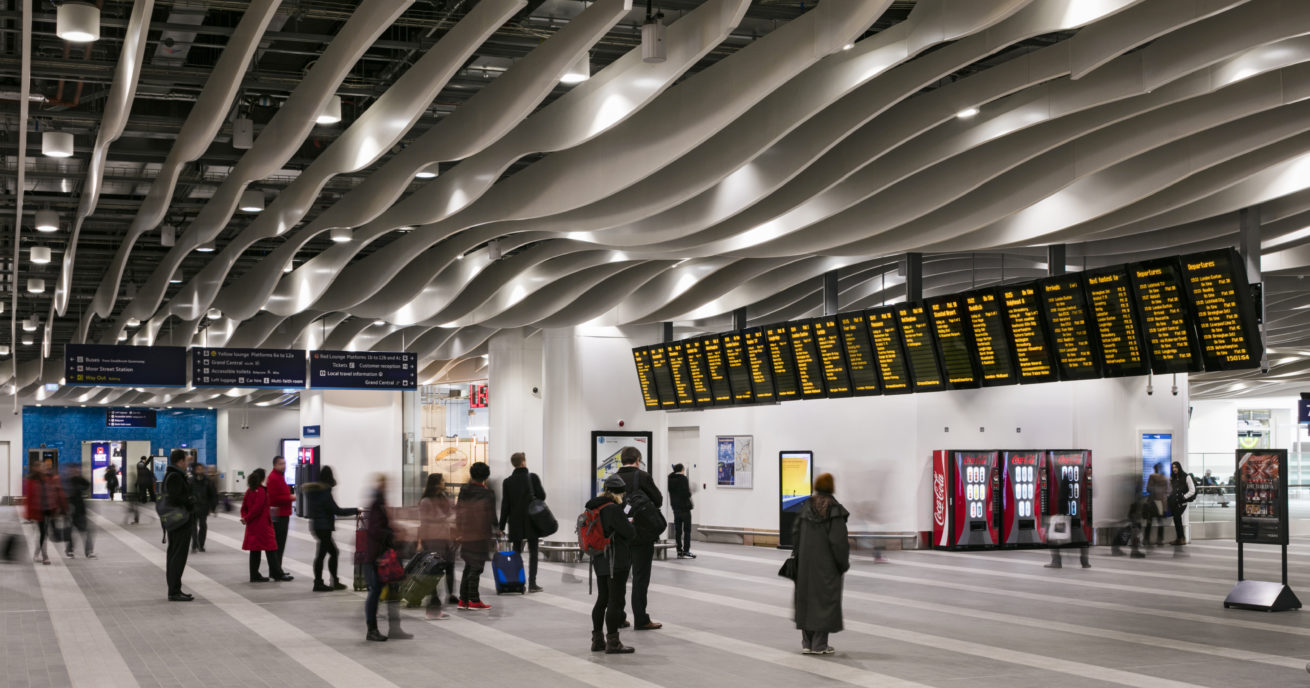We’ve launched a project to help us find new ways to tackle landslips in Sussex. Find out how it’s already helping us give you a safer, more reliable journeys …
Tackling landslips before they happen
Landslips – where loose pieces of earth and rock slide onto the tracks – are a growing challenge. Climate change means we’re facing increasingly heavy and long-lasting rain – making landslips all the more likely.
Landslips can cause delays, speed restrictions or even line closures. In fact, landslips caused 319,703 minutes of delays to trains and freight between 2019 and 2024 in the southern region of England alone.
The Tonbridge to Hastings line in East Sussex is particularly vulnerable to landslips. This is because the line was built on especially unstable clay – called Wadhurst Clay – during the Victorian times. This line has had more earthworks failures in the past 20 years than any other in the area.
That’s why we’ve launched Project Thumper – the Tonbridge to Hastings undrained earthwork and modernisation programme and engineering research project. It will help us learn more about the unique issues the line faces – so we can develop and test new solutions to help keep you moving.

Fixing issues before they become a problem
We’ve already had big wins thanks to this project. We’ve found more than 400 previously unrecorded issues thanks to a new detailed digital model of the route we created. The model is made up of historical records, ground investigations and advanced LiDAR scanning – a type of laser scanner that can survey our routes.
We’re using the model to help us understand where the risks are highest on the line. We can now proactively work through these issues in order of importance and fix them before they affect your journeys.
Collaborating with a heritage railway line
We’re also collaborating with a heritage railway nearby to carry out vital and innovative testing to prevent landslips.The location of Bluebell Railway means it runs on much of the same clay. Plus, its slower train speeds and easier access make it ideal for testing new approaches to preventing landslips.
So with contractor Atkins Realis we’re testing monitoring tools that can help us assess how stable slopes are without digging or disruption.
We’ll continue monitoring and testing at Bluebell Railway for the rest of the year, covering summer and winter conditions.
What’s next?
The insights we’re gaining from this work are helping us understand how and when landslips occur – and how to stop them before they do. It’s delivered £34,831 in efficiencies so far, and the data gathered will help shape future resilience planning across our Southern region.
We hope the learnings will help us better predict and prevent landslips on other busy commuter and freight routes as well. This means better planning, fewer emergency repairs and a more reliable service for you and freight.
And it’s not just about landslips. This partnership is part of a wider push to make the railway more resilient to all kinds of challenges – from extreme weather to infrastructure wear and tear. It’s an important part of our greener railway strategy, which aims to deliver a railway that’s fit for the future, cares for the environment and helps communities thrive.
Derek Butcher, a principal geotechnical engineer at Network Rail, said: “With the right data and the right partnerships, we can move from reacting to landslips to preventing them altogether. That’s better for passengers, better for the environment, and better for the railway.”




